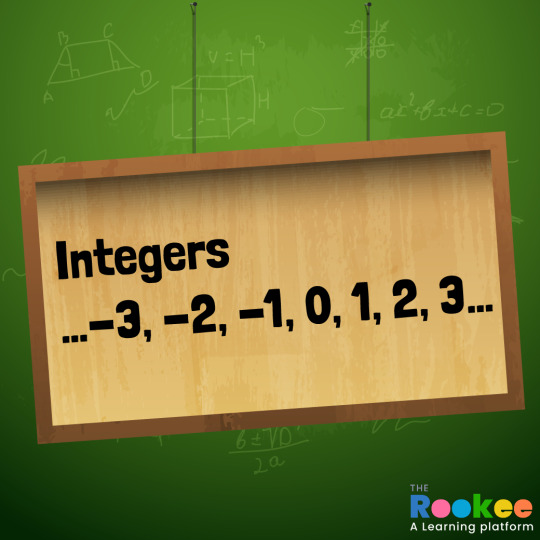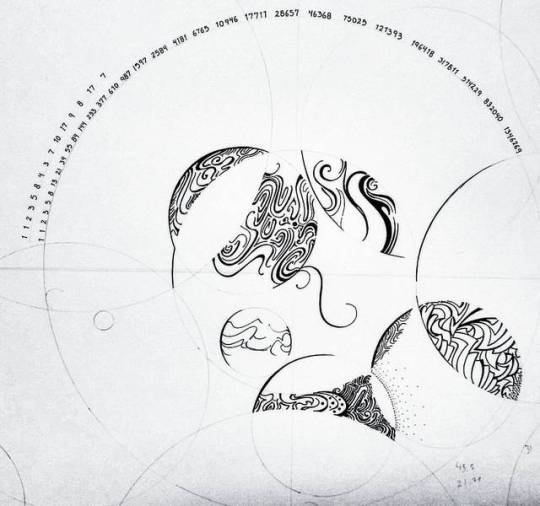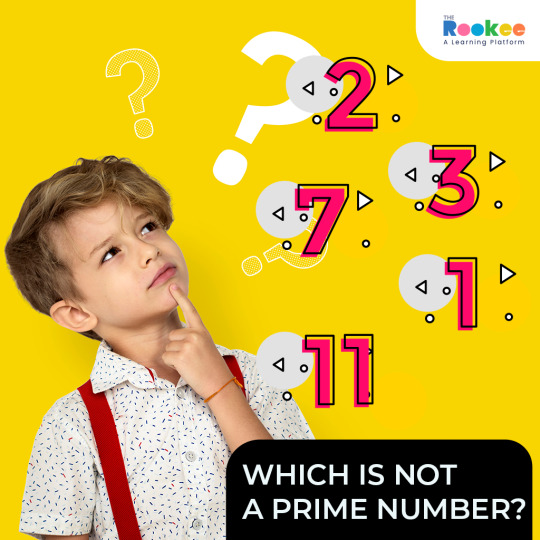#naturalnumbers
Explore tagged Tumblr posts
Text
Numbers in Everyday Life: Understanding Their Importance
Numbers in Everyday Life: Understanding Their Importance
Numbers in Everyday Life: Understanding Their Importance is a document that delves into the significance of numbers in our daily lives. It emphasizes the importance of understanding and valuing numerical concepts. A Deep Dive into the Types, History, and Role of Numbers in Modern Life The Story of Numbers: An Integral Part of Human Life Numbers are more than just tools for calculation; they are interwoven into every aspect of human life. From the earliest lessons of counting natural numbers to the more advanced use of complex numbers, we have relied on numbers to describe, measure, and make sense of our world. Numbers, in their various forms—whole numbers, integers, rational numbers, irrational numbers, and even imaginary numbers—are essential for understanding the universe. 1. What is a Number? A number is a concept that allows us to quantify objects, measure distances, and even solve complex problems. Whether we use natural numbers for simple counting or complex numbers for advanced equations, numbers help us structure the world. Numbers, in essence, are at the heart of mathematics and number theory, the study of the properties and relationships of numbers. 2. Natural Numbers: The Foundation Natural numbers are the most basic numbers we use to count: 1, 2, 3, and so on. They are part of what is known as the set of real numbers, which also includes integers, rational numbers, and irrational numbers. When a child begins counting toys, they are using natural numbers. However, the concept of zero, introduced later, expands natural numbers into whole numbers. 3. Whole Numbers: Including Zero Whole numbers are simply natural numbers plus zero. The inclusion of zero is crucial because it represents the absence of quantity. This small addition makes a big difference in counting systems, allowing for more advanced mathematical concepts. For example, in everyday life, we use whole numbers to represent both something (3 apples) and nothing (0 apples). 4. Integers: Going Beyond Positives Integers expand the world of numbers by including negative numbers. The set of integers consists of positive numbers, negative numbers, and zero. For example, -3, 0, and 5 are all integers. In practical situations, integers are useful for representing gains and losses, such as financial transactions. If you lose $10, that loss is represented by the integer -10. 5. Rational Numbers: The World of Fractions Rational numbers are those that can be expressed as a fraction of two integers. This includes whole numbers, but also numbers like 1/2, 3/4, or 7/8. In real life, rational numbers allow us to divide and measure in portions. For instance, if you eat half a pizza, you're using a rational number (1/2) to describe that portion. 6. Irrational Numbers: Infinite and Non-Repeating Some numbers, however, cannot be written as a simple fraction. These are called irrational numbers. Famous examples include √2 and π (pi). The number π is essential for calculations involving circles, and its value continues infinitely without repeating. These numbers arise naturally in many areas of geometry and calculus, revealing deeper truths about shapes and spaces. 7. Real Numbers: Rational and Irrational Together Real numbers encompass both rational and irrational numbers. They are the foundation of most mathematical operations in everyday life and science. Any number you can place on a number line is a real number, whether it's a whole number, fraction, or irrational number like π. Real numbers allow us to calculate, measure, and describe virtually everything in the physical world. 8. Complex Numbers: Beyond Reality Complex numbers take the concept of numbers even further by combining a real part and an imaginary part. A complex number is written as a + bi, where "a" is the real part and "bi" is the imaginary part. The imaginary number "i" is defined as the square root of -1. Although they may seem abstract, complex numbers have real applications in fields like electrical engineering and quantum physics. 9. Prime Numbers: Building Blocks of Integers Prime numbers are special natural numbers greater than 1 that can only be divided by 1 and themselves. For example, 2, 3, 5, and 7 are prime numbers. Prime numbers are fundamental in number theory because any integer can be expressed as a product of prime numbers, a concept known as prime factorization. This makes prime numbers the building blocks of all other numbers. 10. Even and Odd Numbers: A Simple Division Numbers are classified into even and odd categories based on their divisibility by 2. Even numbers, like 2, 4, 6, and 8, can be divided by 2 without a remainder. Odd numbers, like 1, 3, 5, and 7, leave a remainder of 1 when divided by 2. This simple classification is used in many real-world applications, from dividing objects equally to coding. 11. Ordinal and Cardinal Numbers: Position and Quantity Cardinal numbers are used to count objects, answering the question "How many?" For example, "There are 5 apples." Ordinal numbers, on the other hand, indicate the position of something in a list: "first," "second," "third," and so on. Cardinal numbers are crucial for understanding quantities, while ordinal numbers help in organizing and ranking. 12. The History of Numbers: From Ancient Times to Modern Day The concept of numbers has evolved over millennia. Ancient civilizations such as the Egyptians, Babylonians, and Greeks developed their own systems for counting and measurement. The decimal system (base 10) that we use today was developed in ancient India and later transmitted to Europe through the Arab world. Roman numerals, such as I, V, and X, were also widely used in ancient times and are still seen in specific contexts today. 13. The Importance of Numbers in Daily Life Numbers are essential to almost every part of our lives. Whether we’re measuring distances, calculating time, or making financial decisions, numbers are at the core of what we do. In modern technology, binary numbers (0 and 1) are used in coding and computing. From the prices we see at the store to the data we analyze in science and business, numbers help us quantify and make sense of the world. 14. The Role of Numbers in Mathematics and Science In mathematics, numbers form the foundation of number theory and various branches of mathematics. Calculations in physics, chemistry, and biology all rely on the use of numbers to describe the laws of nature. Prime numbers, irrational numbers, and complex numbers all play critical roles in these scientific fields, solving complex problems and helping advance human knowledge. Conclusion: The Beauty and Power of Numbers Numbers are more than symbols; they are tools that help us understand the world. Whether we are counting objects, measuring distances, solving equations, or describing the universe, numbers are indispensable. Their beauty lies in their simplicity and complexity. From basic counting to the infinite complexity of irrational and imaginary numbers, the world of numbers is vast and full of wonder. As we continue to explore and innovate, numbers will remain a guiding force in science, technology, and everyday life. Their significance cannot be overstated, as they form the very language of the universe. Read the full article
#Binarynumbers#Cardinalnumbers#Complexnumbers#Countingsystems#Evennumbers#Fractionsanddecimals#Historyofnumbers#Imaginarynumbers#Integers#Irrationalnumbers#Mathematicalconcepts#Naturalnumbers#Negativenumbers#Numbertheory#Oddnumbers#Ordinalnumbers#Pi(��)#Positivenumbers#Primefactorization#Primenumbers#Rationalnumbers#Realnumbers#Typesofnumbers#Useofnumbersindailylife#Wholenumbers
0 notes
Text
Why Are Prime Numbers Important 2025

Why Are Prime Numbers Important 2025
The Book-Style Answer (What Teachers Want You to Know) Prime numbers are the building blocks of all other whole numbers. A prime number is any number greater than 1 that has exactly two distinct positive divisors: 1 and itself. This means it can’t be divided evenly by any other whole number. Some common examples: 2, 3, 5, 7, 11, 13, 17… Why do they matter so much? 1. They’re the foundation of number theory. Every whole number greater than 1 can be written as a product of prime numbers — this is called the Fundamental Theorem of Arithmetic. So just like atoms build up all matter, prime numbers build up all whole numbers. 2. They keep your data safe. Prime numbers are the unsung heroes of modern encryption. Most security systems — from online banking to private messaging — rely on the difficulty of factoring very large prime numbers. It’s super easy to multiply two big primes together, but ridiculously hard (even for computers) to reverse-engineer the original primes from their product. 3. They help us understand math patterns. From geometry to algebra to complex algorithms, prime numbers often pop up in surprising places — especially when we try to find patterns or predict outcomes in large sets of numbers. 4. They’re deeply mysterious. We’ve been studying primes for over 2,000 years, and there’s still no formula that generates all of them. We don’t even know if there's a pattern to their distribution. Mathematicians are still chasing answers. In short, prime numbers might look random, but they’re a kind of mathematical gold: rare, powerful, and fundamental. —




The Real-Talk, Friendly Version Alright, let’s be honest. When you first hear the phrase "prime numbers," you probably feel your brain start to glaze over. Like — why do we care if 7 can’t be divided by anything but 1 and itself? That’s not exactly Netflix material. But here’s the truth: prime numbers are the rebels of the math world. They don’t follow the crowd. They can’t be split evenly by anyone except themselves and 1. They’re fiercely independent — and somehow, every single other number in existence is made from them. Seriously — all the big, complicated numbers out there? They’re just prime numbers multiplied together in different ways. So if math were made of LEGO bricks, prime numbers would be the tiny core blocks that everything else snaps onto. But that’s not even the coolest part. Prime numbers are also your digital bodyguards. You know how you can buy stuff online, text your friend something super personal, or check your bank account without everyone on the internet reading over your shoulder? That’s all thanks to prime numbers and encryption. The tech basically hides your info inside really big prime number puzzles that only your computer can solve. And get this — even though we’ve been studying them forever, we still don’t know why primes act the way they do. They’re unpredictable. Mysterious. Beautifully weird. Some of the smartest people alive are still trying to crack their secrets. So yeah — primes might seem like just a math thing, but they’re actually everywhere, from your phone security to ancient codes to theories about the universe. They matter. A lot. — External Resource: Want to dig deeper into the mystery of prime numbers? Check the Wikipedia page: Prime Number https://en.wikipedia.org/wiki/Prime_number — Related Articles from EdgyThoughts.com: Why Is Zero So Powerful in Math 2025 https://edgythoughts.com/why-is-zero-so-powerful-in-math-2025 Why Infinity Isn’t Just a Number 2025 https://edgythoughts.com/why-infinity-isnt-just-a-number-2025 — Disclaimer: The following easy answer is written in a simplified and relatable style to help you understand the topic better. If your teacher expects the textbook version and you write this instead, we are not responsible for any loss of marks. Our goal is purely to make concepts easier to grasp. — Read the full article
#20250101t0000000000000#2025httpsedgythoughtscomwhyinfinityisntjustanumber2025#2025httpsedgythoughtscomwhyiszerosopowerfulinmath2025why#algebra#algorithm#arithmetic#computer#divisor#edgythoughtscom#encryption#factorization#formula#fundamentaltheoremofarithmetic#geometry#infinity#internet#mathematician#mathematics#matter#multiplication#naturalnumber#netflix#number#numbertheory#numberhttpsenwikipediaorgwikiprimenumber#phrase#primenumber#puzzle#shoulder#textbook
0 notes
Photo




Numbers are interesting, aren’t they! Learn about all from mathematic experts. To take their sessions enroll with the link https://bit.ly/3xzKZJ2 and sign up.
0 notes
Text
youtube
Number System Concept Part-1 | Wonderful Journey from Natural to Real Numbers by Anshu Madam
Learn Number System Concept Wonderful Journey from Natural Numbers to Real Numbers.Natural numbers grow up Whole and Whole to Integer and Integer to Rationals which Shake hand with Irrationals and make a big World of Real Numbers.
ATECH ACADEMY 📷 The Future Begins Here
With specialization in - 8th | 9th | 10th | MATHS | SCIENCE
+1 | +2 MATHS | PHYSICS | CHEMISTRY | BIOLOGY | IITJEE | NEET | MEDICAL
ATECH COMPETITIONS NDA | CDS | AFCAT | INET | AIR FORCE | NAVY | SSB
Coaching Notes | Doubt Clearing | Revision | Exam Tips | CBSE | ICSE | NCERT
Contact for Online & Classroom Coaching Classes
Atech Academy Website - https://www.atechedu.com/
#Education#Coaching#Training#Tuition#Teacher#Tutor#AtechAcademy#Maths#rationalnumbers#numbersystem#irrationalnumbers#wholenumbers#naturalnumbers#realnumbers#differencebetweenirationalnumbers#numbersystemconcept#whatisarationalnumber#numbersystemclass9cbse#Youtube
0 notes
Text
Natural Numbers feat. Judah Eskender Tafari - Listen To The Lion | New EP

NATURAL NUMBERS FEAT.T JUDAH ESKENDER TAFARI - LISTEN TO THE LION | #New #EP | A beautuful acoustic set, showcasing Judah's talents and emotional depth. #naturalnumbers #judaheskendertafari #listentothelion #dubclub #reggaelegend #acousticreggae #gonetoosoon #newep #reggae Read the full article
0 notes
Photo

Birth Anniversary..! Dattathreya Ramchandra Kaprekar..! 17 January 1905..! #DattathreyaRamchandraKaprekar was an #Indian #Recreational #Mathematician who described several classes of #NaturalNumbers including the #Kaprekar, #Harshad and #SelfNumbers and #Discovered the #KaprekarConstant, named after him..! https://www.instagram.com/p/BsvlK_slItklSrlufB3gA6EzecbIxAD1K4pb840/?utm_source=ig_tumblr_share&igshid=rt43fxwk5gkr
#dattathreyaramchandrakaprekar#indian#recreational#mathematician#naturalnumbers#kaprekar#harshad#selfnumbers#discovered#kaprekarconstant
0 notes
Video
vimeo
Wittgenstein, Russell, and our concept of the natural numbers
Kripke discusses some of Wittgenstein’s objections to logicisim and in particular the epistemological implications of reducing arithmetic to logic. Additionally, he touches on the problem of identifying when a presentation of a natural number is “immediately revelatory” or as he calls a “buck-stopper” which has implications for the larger discussion of intensional semantics and ‘de re’ reference to numbers. My favorite part of his argument is invoking recursion theory and computational complexity theory to argue plainly that there are in fact, contrary to Quine’s animadversions, some cases where we must adopt “a frankly inequalitarian attitude toward the various ways of specifying [a] number.”
0 notes
Link
Learn about Whole numbers and all the terms included in this chapter like decimal to whole number, natural number, rational number, consecutive whole numbers, every integer is a whole number, greatest whole number, largest whole number. Our teacher will teach you all the topics and all the explanations included in these chapters so that you can understand all the concepts easily.
0 notes
Photo

Number system part 1. #Deepak_Maths #naturalnumber #compositenumbers #realnumbers #irrational #rational #primenumbers #students #mathsmemes #maths #puzzles #Tricks #calculation https://www.instagram.com/p/B60jyU9no9N/?igshid=1uvtxb39kbf2g
#deepak_maths#naturalnumber#compositenumbers#realnumbers#irrational#rational#primenumbers#students#mathsmemes#maths#puzzles#tricks#calculation
0 notes
Photo

Números naturales Natural numbers 自然数 #自然数 #絵 #ペン #drawing #pen #doodle #black #naturalnumbers #dibujo #pluma #negro #ismairu #tinta #números #naturales
#pluma#tinta#números#ismairu#drawing#doodle#pen#negro#自然数#naturales#絵#black#naturalnumbers#dibujo#ペン
0 notes
Note
Ok, but what if you define "finite set" to require it to be non-empty? I think occasionally people use that convention? Empty, finite, or infinite? But yeah I agree that 0 in naturalnumbers.
this whole male/female thing may have been tense, but it’s nothing compared with dividing everyone by the N0 / N+ binary.
2 notes
·
View notes
Link
This Video deals with - Geometric Progression - Finite Numbers - Infinite Numbers #numberSystem #EvenNumbers #OddNumbers #NaturalNumbers #WholeNumbers #Integers #PrimeNumbers #RationalNumbers #IrrationalNumbers #ComplexNumbers #DecimalDivisibility #geometricProgression For any queries/doubts/information - we are just an email away - mail us @ [email protected] Subscribe to : https://bit.ly/2YQOgbs https://www.youtube.com/playlist?list...
#numberSystem#EvenNumbers#OddNumbers#NaturalNumbers#WholeNumbers#Integers#PrimeNumbers#RationalNumbers#IrrationalNumbers#ComplexNumbers
0 notes
Photo

Comment the answer below. To learn about prime, composite, integer natural, whole numbers take sessions by experts in mathematics. Sign up with the link https://bit.ly/37Uy2iq
#therookee#maths#naturalnumber#mathematics#primenumbers#compositenumbers#integernumber#onlineclasses#digitallearning#onlinelearningplatform
0 notes
Video
youtube
Write a recursive function in C to obtain the running sum of first n nat...
https://www.easterscience.com/q12-write-a-recursive-function-to-obtain-the-running-sum-of-first-25-natural-numbers/
0 notes
Video
youtube
Prepare for class 8 Maths in English. Natural number forms the basis of all number sets. Learn the definition of natural numbers, and know its arithmetic and algebraic properties. Watch interactive video lectures delivered by experts on scholarship exams for class 8 in Maharashtra. Look for other chapters from Maths guide for class 8 and Maharashtra scholarship exam in the form of video sessions here.
0 notes
Text
COMP 250 Assignment 1 Solved
Introduction
Computers represent integers as binary numbers (base 2), typically using a relatively small number of bits e.g. 16, 32, or 64. In Java, integer primitive types short, int and long use these fixed number of bits, respectively. Using a fixed number of bits for integers limits the range of values that one can work with, however. This limitation is a significant problem in cryptography, for example, where one uses large integers to transform files so that they are encrypted. For any base, one can represent any positive integer p uniquely as the sum of powers of the base. This defines a polynomial: 𝑛−1 𝑝 = ∑ 𝑎𝑖 𝑏𝑎𝑠𝑒𝑖 = 𝑎0 + 𝑎1 𝑏𝑎𝑠𝑒 + 𝑎2 𝑏𝑎𝑠𝑒2 + … + 𝑎𝑛−1𝑏𝑎𝑠𝑒𝑛−1 𝑖=0 where the coefficients 𝑎𝑖 satisfy 0 ≤ 𝑎𝑖 < 𝑏𝑎𝑠𝑒 and 𝑎𝑛−1 > 0. The last condition is important for uniqueness and comes up below in the Tips where we briefly discuss the case that two operands have a different number of digits. The positive integer p can be represented as a list of coefficients (𝑎0 ,𝑎1 ,𝑎2 , … 𝑎𝑛−1). The ordering of the coefficients is opposite to the usual ordering that we use to represent numbers, namely 𝑎𝑛−1 … 𝑎2 ,𝑎1 ,𝑎0 e.g. integer 35461 is represented as a list of coefficients (1,6,4,5,3). In this assignment, you will implement basic arithmetic operations on large positive integers. Java has class for doing so, called BigInteger. You will implement your own version of that class. In particular, you will implement basic arithmetic algorithms that you learned in grade school. Your representation will allow you to perform these operations in any base from 2 to 10. The methods could be extended to larger bases but we will not bother since it would require symbols for the numbers {10, 11, ..} and otherwise the solution would be the same. You are given a partially implemented NaturalNumber class. The class has two private fields: base and coefficients. The coefficients 𝑎𝑖 of the number are represented using the LinkedList class. Coefficients order was described above. The starter code for the class also contains: code stubs of the methods that you are required to implement. helper methods that you are free to use, namely clone(), timesBaseToThePower(), compareTo(), toString(). You are not allowed to modify these helper methods. a Tester class with a simple example. Modify this example to test your code.
Your Task
Implement the following methods. We suggest you implement them in the order given. The signatures of the methods are given in the starter code. You are not allowed to change the signatures.
1) plus (30 points)
Implement the grade school addition operation. We call it plus rather than add to avoid confusing it with the add method for lists. It is the easiest of the four methods to implement.
2) times (30 points)
Implement the grade school multiplication method. Do not store the rows in a 2D table. Instead, when you compute each row in the table, add it to an accumulated sum (using use the plus() method) which is initialized to zero. Once you have added a row, you can discard it. To compute each row, we suggest that you write a helper method timesSingleDigit() that multiplies the caller NaturalNumber object with a single digit. The starter code provides a slow multiplication method which uses repeated addition. You should use this method to verify the correctness of your times() method for small operands. Note how slow the ‘slow method’ is relative to grade school multiplication for large operands.
3) minus (25 points)
Implement the grade school subtraction method. The starter code verifies a.minus(b) > 0, so you can assume this in your tests. Although this question is worth fewer points, it is perhaps more challenging than the first two, because it can be tricky to handle the borrowing properly.
4) divide (15 points)
Implement the grade school long division algorithm which is a fast algorithm for performing integer division. This is the most challenging question since you will need to figure out for yourself what this algorithm does. We have provided you with a slow division method which is based on repeated subtraction. This is mainly to verify the correctness of your code on small inputs.
Other Requirements
Use Java naming conventions for variable names e.g. variables and method names should be mixed case with a lower case first letter. Although your solution will be tested and graded automatically, it sometimes happens that the TA/grader needs to examine the code. In this case, it is helpful if you have added comments to describe what your solution is doing. We reserve the right to penalize you for poor style e.g. non-existing or unhelpful comments, or improper indentation. Eclipse does proper indentation automatically, as do other excellent IDEs.
Tips
We suggest that you begin by testing your code on numbers that are written in base 10. Once that is working, test it on bases 2 to 9. Use an online converter to verify your answers e.g. http://www.cleavebooks.co.uk/scol/calnumba.htm You may write your own helper methods, but if you do then you must be sure to document them, so that the TA grader it can easily follow what you are doing. Some methods in the starter code “clone” the operands and work with the cloned ones rather than the original ones. This is done because the methods change the operands. For example, some methods are just easier to implement if the two operands have the same number of digits. So, if in some instance the two operands don’t have the same number of digits, then we clone and modify the smaller one by appending higher order digits with value 0. Second, a method might change the digits of one of the operands. For example, the subtraction operation a.minus(b) may require “borrowing” from higher to lower powers for the number a. The code uses a LinkedList rather than an ArrayList. There is no significance to this, and we could have used an ArrayList instead. The advantages of using the LinkedList class is that it has methods addFirst() and addLast() which make code easier to read. Also, the method addFirst(element) is more efficient for LinkedList than the corresponding add (0, element) for an ArrayList. The disadvantage of using LinkedList is that the algorithms sometimes iterate over the coefficients, e.g. using a for loop over coefficients.get( index ) with an index variable, and this is an inefficient way to iterate through linked lists, as I’ve argued in the lecture. This an important issue in practice and you should think about it when studying array lists versus linked lists, but we will ignore this particular inefficiency for the assignment. Get started early! Have fun! Good luck! Read the full article
0 notes